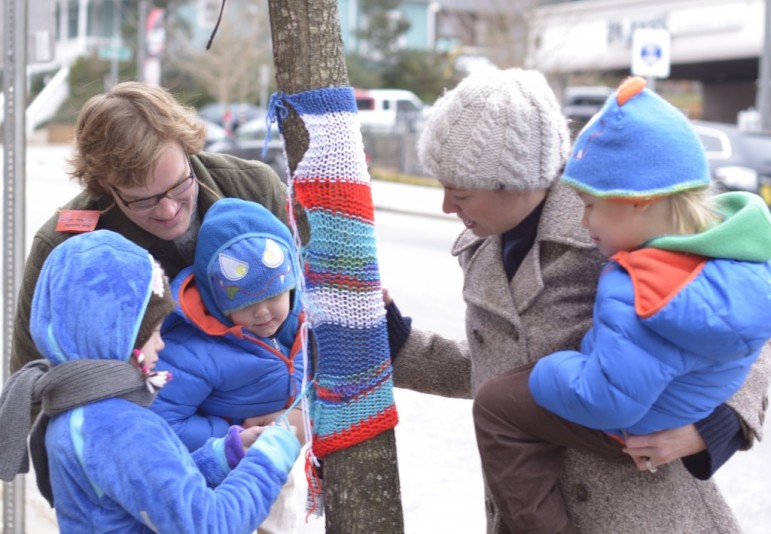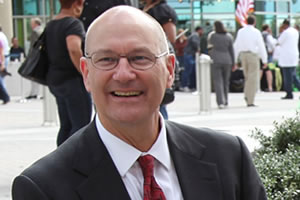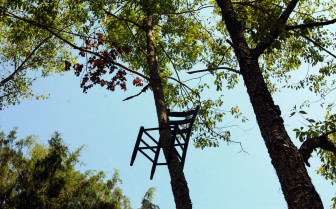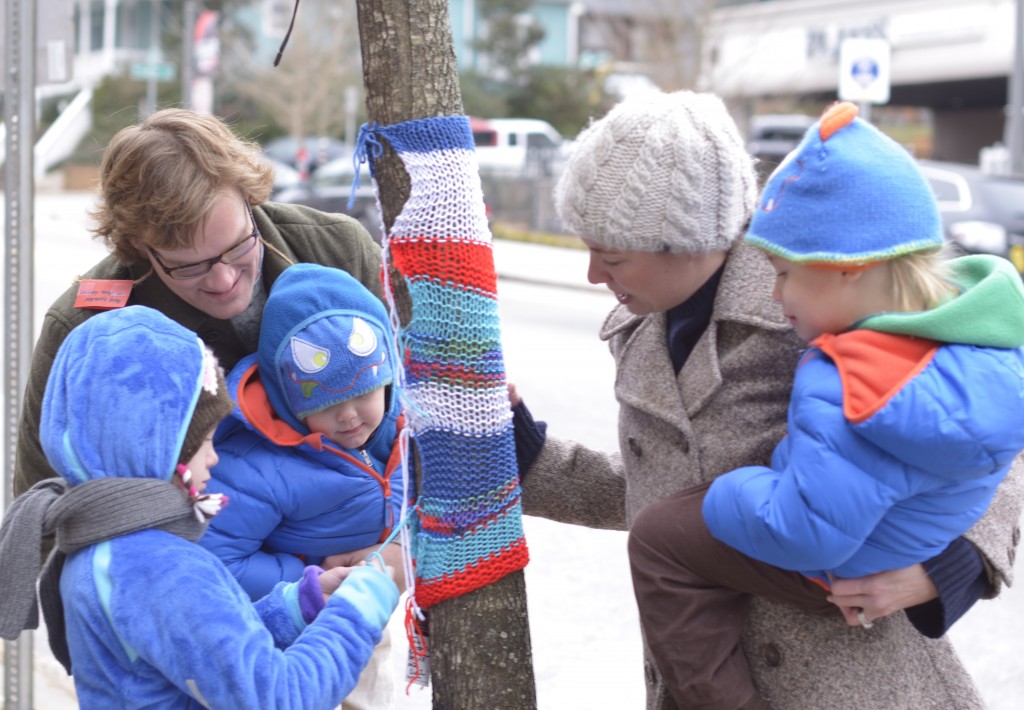It started in December 2013 with tree sweaters on Glenwood South in a public right-of-way.

c/o Glenwood South Neighborhood Collaborative
In the fall of 2013, a group of more than 70 neighbors, including City Councilor, Bonner Gaylor, pictured above, adorned the trees in Glenwood South with hand-knit sweaters
According to Gerald Bolas, the executive director in the Office of Raleigh Arts, no one saw it coming. The project had popped up on short notice, in the middle of winter, and because the sweaters were to be on public property, the only way the project could be authorized was through City Council approval. This triggered a debate about the best way for citizens to publicly display their artwork.
The debate reached its conclusion October 21, 2014, during the City Council meeting.
Citizens now have a clearly defined series of steps for featuring artwork on public property, whether that artwork is permanent or temporary, whether the artwork is featured on a public right-of-way or any other piece of public property.

Gerald Bolas is the executive director in the Office of Raleigh Arts
“We wanted to define a process that empowers the city to work with citizens that have an idea for art on public property,” Bolas said.
The policy adopted on October 21 was worked on by both the Arts Commission and the Public Art and Design Board and is consistent with the Public Art Policy passed in 2011, which states that the Arts Commission has responsibility for the review and approval of temporary public art projects, while the Public Arts and Design Board has responsibility for the review and approval of permanent art projects with a value of $10,000 or greater.
The Public Art and Design Board approved the policy on April 29, 2014, and the City of Raleigh Arts Commission did the same on May 13, 2014, leading to the City Council vote on October 21.
“The question I’d ask,” Bolas said, “is whether we will [now] have more citizen-initiated artwork.”
He said he could not predict that but said that their goal during the formation of the policy was to have a process that is “clear, transparent, accountable” and sets the “ground rules of art on public property.”

Karen Tam / Raleigh Public Record
Artist Tom Shields created Forest for the Chairs on the grounds of the North Carolina Museum of Art
The steps in the process outlined in the adopted policy include having the project reviewed by the City’s Public Art Coordinator, having the project reviewed by the City Department responsible for the public space or have regulatory authority, and working with either the City of Raleigh Arts Commission or the Public Arts Design Board, depending on the nature of the project, to shape the project so that it fits the standards mentioned in the Public Art Policy.
During the October 21 City Council meeting, numerous councilors took time to praise both organizations involved for their efforts, hard work, and dedication to the arts in the City of Raleigh.
Councilor Maiorano noted that he would like to see a more aggressive and robust engagement of the private sector in regard to the arts and that the arts can be a branding opportunity for not just the city but the neighborhoods, community, and pieces of the community.
Councilor Gaylord said the policy was a very good start but asked if they had a strategy for taking citizen-initiated artwork on public property to the next level by reaching out the public to get increased participation.
Councilor Baldwin noted that one concern that needed to be addressed was the likelihood of someone disregarding the process and simply putting artwork on public property. She also said that Raleigh is a city of both innovation and creativity and that going through the series of steps outlined in the policy might hamper innovation and creativity.
The policy was approved unanimously in a 7-0 vote.
